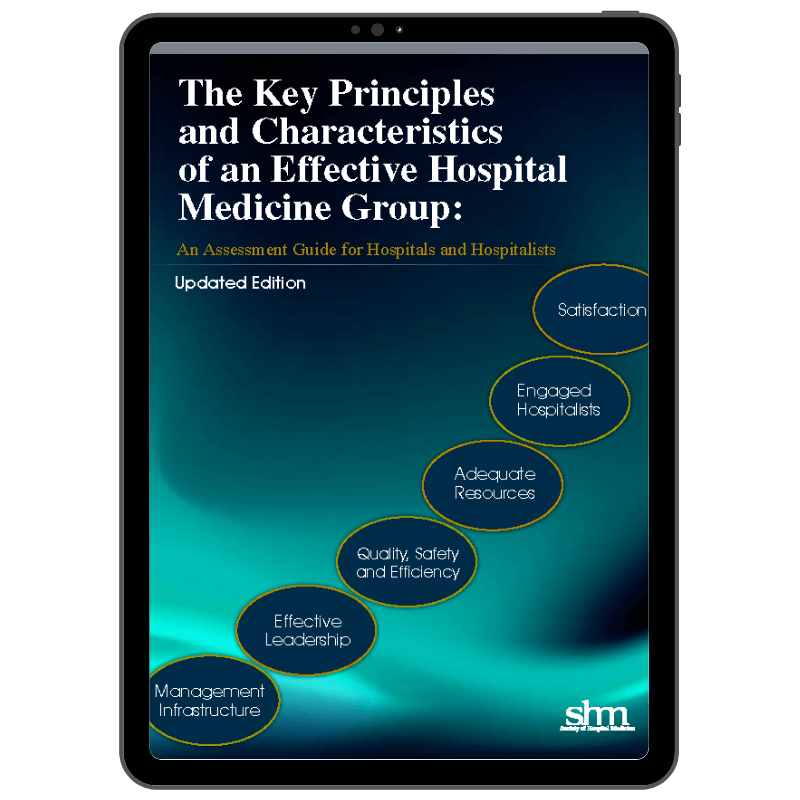Understanding SHM's Key Characteristics

With the continuing growth of the specialty of hospital medicine, the capabilities and performance of hospital medicine groups (HMGs) vary significantly. There are few guidelines that HMGs can reference as tools to guide self-improvement. To address this deficiency, the Society of Hospital Medicine (SHM) Board of Directors authorized a process to identify the key principles and characteristics of an effective HMG in February 2012.
In guiding this effort, the SHM Board felt that the principles and characteristics should be directed at both hospitals and hospitalists, addressing the full range of management, organizational, clinical and quality activities necessary to achieve effectiveness. Furthermore, the Board defined effectiveness as consisting of two components. First, the HMG must assure that the patients managed by hospitalists receive high-quality care that is sensitive to their needs and preferences. Secondly, the HMG must understand that the central role of the hospitalist is to coordinate patient care and foster interdisciplinary communication across the care continuum to provide optimal patient outcomes.
The SHM Board appointed an HMG Characteristics Workgroup consisting of individuals who have experience with a wide array of HMG models and who could offer expert opinions on the subject. Over a three-year period, these experts developed two related documents, both entitled The Key Principles and Characteristics of an Effective Hospital Medicine Group: An Assessment Guide for Hospitals and Hospitalists. Both documents outline 47 key characteristics of an effective HMG, organized into 10 key principles, but they differ somewhat in their content.
In guiding this effort, the SHM Board felt that the principles and characteristics should be directed at both hospitals and hospitalists, addressing the full range of management, organizational, clinical and quality activities necessary to achieve effectiveness. Furthermore, the Board defined effectiveness as consisting of two components. First, the HMG must assure that the patients managed by hospitalists receive high-quality care that is sensitive to their needs and preferences. Secondly, the HMG must understand that the central role of the hospitalist is to coordinate patient care and foster interdisciplinary communication across the care continuum to provide optimal patient outcomes.
The SHM Board appointed an HMG Characteristics Workgroup consisting of individuals who have experience with a wide array of HMG models and who could offer expert opinions on the subject. Over a three-year period, these experts developed two related documents, both entitled The Key Principles and Characteristics of an Effective Hospital Medicine Group: An Assessment Guide for Hospitals and Hospitalists. Both documents outline 47 key characteristics of an effective HMG, organized into 10 key principles, but they differ somewhat in their content.
